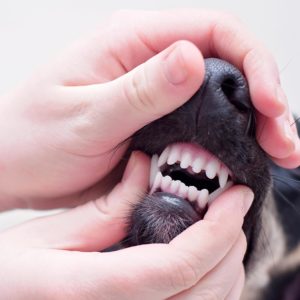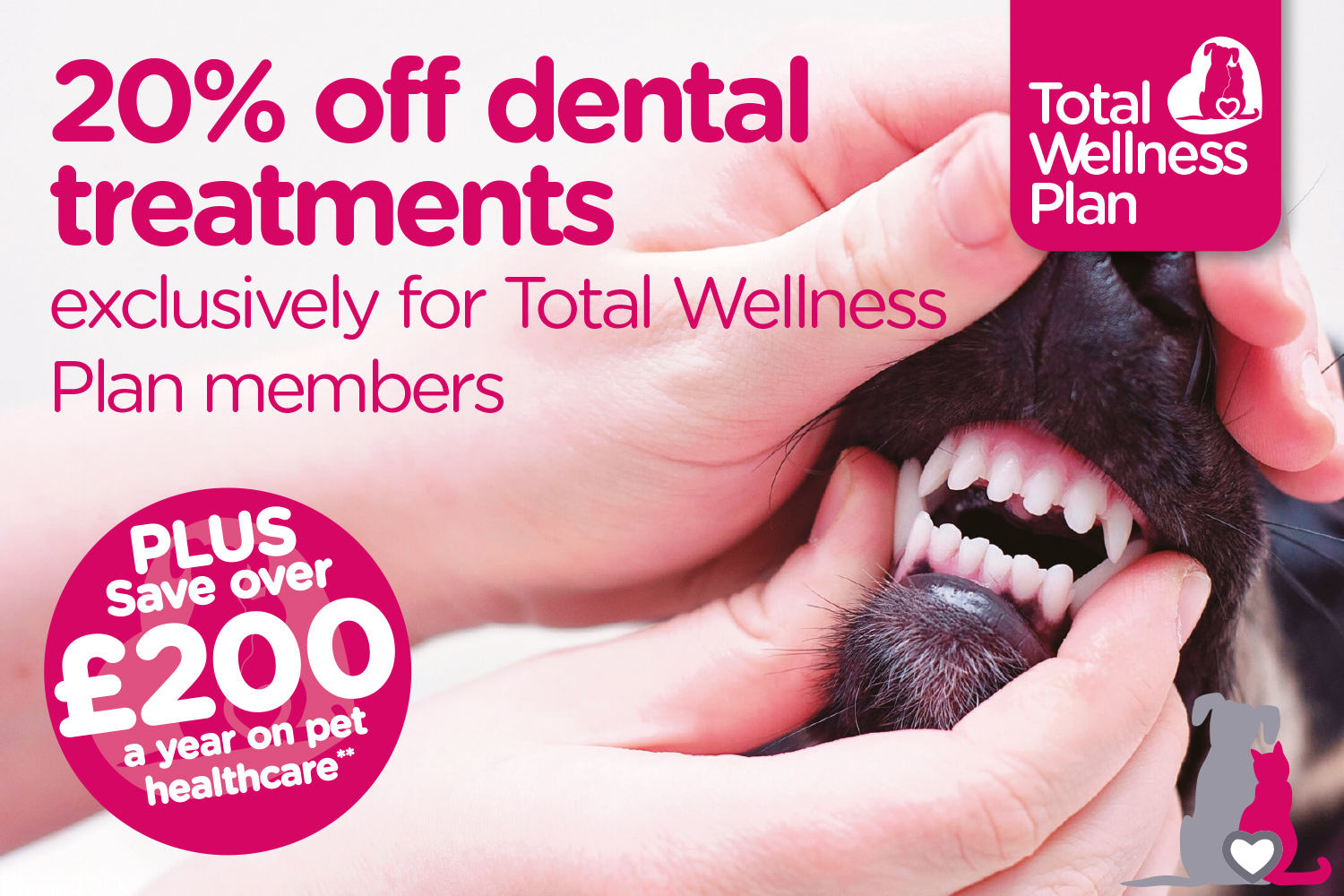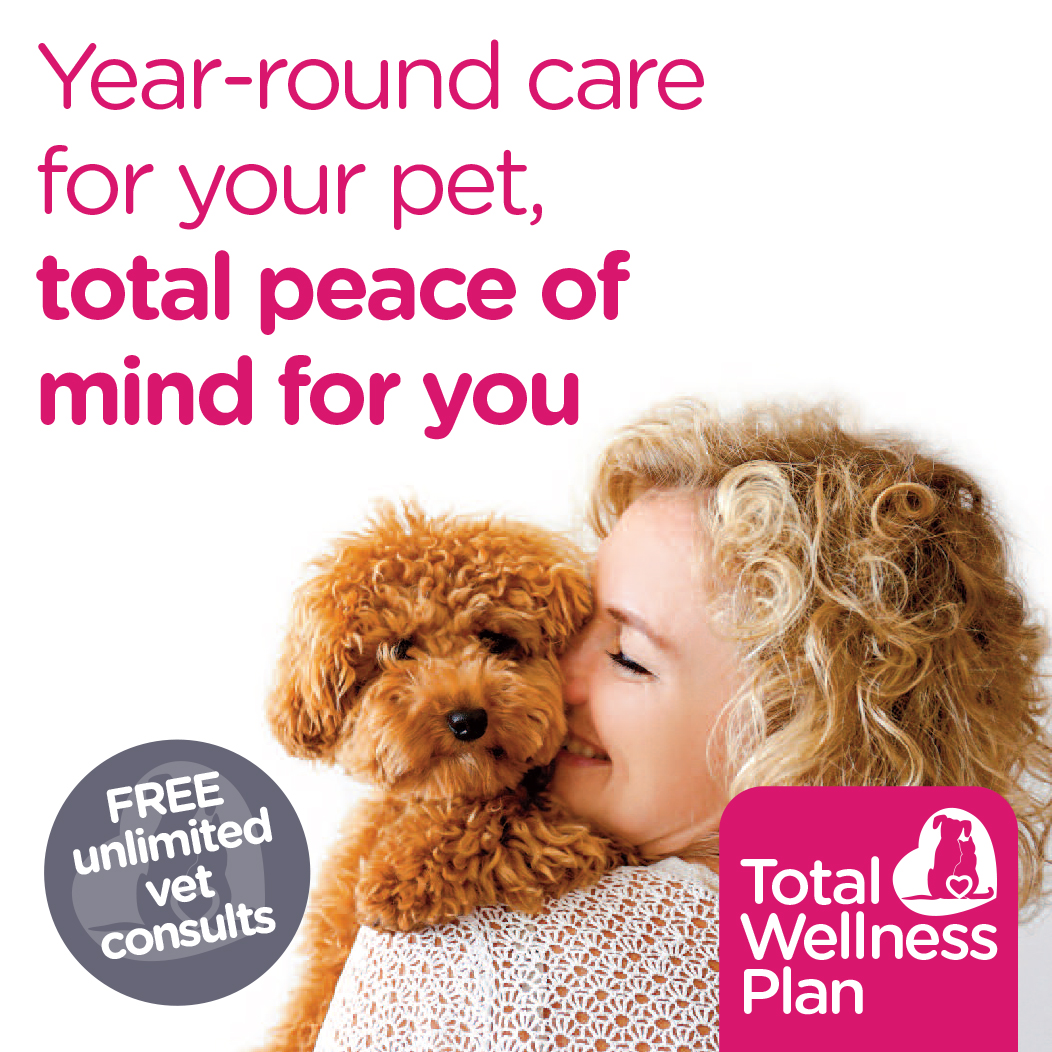So your vet has recommended a dental procedure….
Dental disease is very common in dogs and cats with seven out of ten pets over the age of three years having some issues. Fortunately, much of this dental disease is reversible when action is taken early enough, but if left untreated can progress to irreversible severe damage to the teeth, gums and jaw.

The most common problem we see is periodontal disease where plaque builds up on the tooth surface, especially under the gum line and over time this normally leads to bacterial infection which when untreated frequently causes tooth loss. The bacteria can also enter the bloodstream and cause organ damage, especially affecting the heart, liver and kidneys.
Up to half of all cats may also suffer from an especially unpleasant illness called tooth resorption (TR) where holes develop in the tooth painfully exposing nerves to the air. Cats will remarkably often appear outwardly unaffected by this awful condition, although treatment is essential.
Frequently asked questions
To be honest, the majority of pets show very few outward signs of dental disease, including those where teeth are starting to fall out. Bad breath is common due to the release of volatile gases associated with the bacterial infection, but pets typically will not stop eating or show obvious signs of pain until the disease process is very advanced. This makes it much harder for us as caring pet owners to realise how much discomfort our pet is in and we only realise how bad things were, when we see a marked improvement after a dental procedure. As a vet I commonly hear how clients feel their pet is acting “like a puppy again” after we remove the pain they have been living with, often for years.
This is a really important question and in the very earliest stages of dental disease changes to diet, tooth brushing and oral health products may really help, but for the majority of pets we see, the disease has gone beyond this point.
It is true that a general anaesthetic does involve some risks that do increase with age and other illness and these need to be considered carefully. However, these risks are normally a lot lower than we fear and the harm caused by the dental disease far outweighs anaesthetic concerns. It is important that you discuss any specific concerns you might have with you vet before making any decisions.
Physically scraping or cracking off the yellow tartar when awake does temporarily improve the look of your pet’s mouth, but it is not possible to reach the critical disease below the gum line so in reality does frustratingly little to help your pet.
It just isn’t possible to know how poorly your pet’s teeth are until they are under anaesthetic and have had been charted with dental x-rays taken, even if your pet is brilliantly well behaved. Vets will always make a “best guess” as to what is expected, but as the disease process is hidden away under the gum there can sometime be surprises, which are not always bad news! Some pathology e.g. dental cysts cannot be seen at all with a visual exam and this is why, unlike most vets, we include dental xray as routine without any extra cost to yourself.
This is a really difficult question to answer as we just don’t know until we start, what exactly will be involved. When we are at the dentist, a plan can be formed more easily as, unlike our pets, we will sit still for probing and xrays. This means that traditionally veterinary dental procedures could last several hours, which we feel puts pets at far too high a risk of complications. We approach dental procedures as a staged process with the first stage including blood tests, anaesthetic with intravenous fluids, dental charting and xrays, followed by assessment, ultrasonic scale and polish and emergency extractions if required. We know that after 90 minutes the risk of anaesthetic complications increases, healing worsens and infections increase so at this time point the vet will decide whether the procedure can be safely completed or if it is best to finish the extractions during a second shorter anaesthetic at a later date. This is in reality, fairly unusual with at least nine out of ten dental procedures completed in one visit.
Pets have many multi-rooted teeth and these are much longer than in ourselves and when diseased, they can be very fragile. If the jaw is also involved it can also be delicate, so we would never consider an extraction if we didn’t feel it was absolutely necessary. However unfortunately as dental disease often goes unnoticed for so long, it is really not unusual for a pet to have teeth that are causing pain and spreading infection around the body and thus there is no choice but to extract.
It is difficult to know in advance whether your pet will need extractions and this means that traditionally most vets will be unable to provide a reliable estimate without the potential for numerous add-ons. To avoid this, we have decided to have an all-inclusive fee of only £595 for the first dental stage which includes:
- Admit and discharge appointments
- Pre-anaesthetic blood tests
- General anaesthesia including intravenous fluid therapy
- Oral and dental examination
- Dental x-ray
- Ultrasonic scale and polish
- Emergency tooth extraction, including surgical extractions, as required.
- Suture materials and other consumables as required.
- Antibiotics during and after the procedure if required.
- Pain relief before, during and after the procedure.
- Post op checks
If a second staged procedure is required (perhaps one in ten pets), then there would be a further charge of £290 up to several months later.
Pet dentistry may be covered under your insurance policy and we also provide a 20% discount to all members of our Total Wellness Plan.
Anaesthetic complications are fortunately rare at around 1 in 500, but obviously can be extremely serious and the risk is higher in pets that are significantly older or with certain pre-existing health issues. As a pet owner a discussion with your vet, especially if older or unwell, is important to consider the relative risks of intervention versus inaction.
Most dental complications are associated with extractions and include:
- Retained or displaced root tips
- Bleeding or infection
- Jaw fracture
- Breakdown of sutured tissues
Whilst we will always do everything to minimise risk of complications, they do occur from time to time and are normally treatable by our team.
It is likely that afterwards your pet might be a little sore around the mouth and we will always ensure there is suitable pain relief to go home with, often Metacam which is given with food.
We recommend soft food for a few days and if you pet has sutures placed then hard kibble and chews, toys etc need to be avoided for at least a week.
If you have any concerns, e.g. loss of appetite, vomiting then always contact the surgery asap.
Any issues can also be discussed at a routine post-op check at the surgery.
We really hope not, especially if a suitable home dental care plan including regular tooth brushing is started when your pet has recovered. That said, it is unfortunate that some pets will need regular procedures despite every effort and we would recommend working with your vet team to decide on a most suitable schedule for visits.



